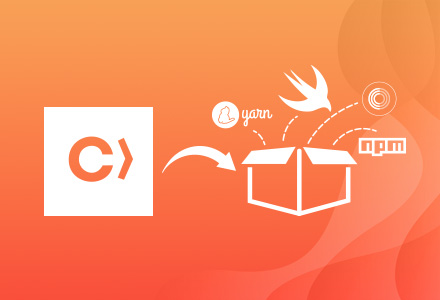Email can be one of the most successful digital marketing avenues for reaching and communicating to your audience. It can also be difficult to get right, and you may currently not be seeing the results you want to from your campaigns.
So, is there such a thing as the perfect email, and if so, how can you master it?
Unfortunately, there doesn’t seem to be any set template that will give you the results you want every time. Creating the perfect email for your business is ultimately about trial and error and finding out what works for you and your audience. Having said that, there are some best practice rules to follow, to ensure you are maximising your potential to see great results.

Make a goal
Before you even start to put together an email, decide what you want to achieve from your campaign. If you know what success would mean to you, it will be easier to achieve, rather than just sending an email for the sake of sending.
Do you want your audience to read an article, go to an event, buy a product, follow you on social media, answer a questionnaire? Be proactive, not reactive and produce an email strategy in advance, detailing what you want to say, when and to who. You can always tweak your plan as you move through it depending on results, but if you have a clear focus of what you want to achieve in the long run, your communication will be stronger to your target audience. You can also start to introduce triggers when you become more confident so that you have automated emails tailored to a specific audience working in the background, based on time and behaviour.

Testing 1 2 3
Establishing goals and a strategy before you start will also help when you test your campaigns. You will already have determined what is important to you, and information that is relevant to your success.
Testing your campaigns and finding out what works for you is a key part of success. Use your data to challenge your ideas and confirm the mechanisms that are right for your target audience and most importantly learn from the results.
It is not all about getting the most clicks, for instance, if your goal is to increase sales, an increase in click-through rate is only a win if your sales have also increased. An uplift in CTR but no more sales isn’t necessarily a successful campaign. But if you want more people to read an article and your click-through rate to that article has increased, this would be a positive result.
Never stop testing, you should run A/B tests on various parts of your email if you want to see the best results.
For example, you could test variations of:
- Subject lines
- Call to actions
- Time of day
- Day of week
Remember to only test one item at a time, otherwise, your results will be skewed. Once you find a winning component, move on to the next test. If you don’t have the time or resource to test every campaign in this way, look at your goal and determine what is the most important test to run for the results you are looking for. For example, if you’re primary goal is to drive users through to purchase a specific product on your website, you could test variations of the button/call-to-action.
You should always find time to test extensively when:
- Your database has grown, as this may mean their needs and expectations may have changed
- When you have a new goal or start sending a different type of campaign (if you have a new product for instance)
- If your engagement drops or your results start to differ hugely
Learn from your tests, create an email strategy around your results and always make sure you have your end goal in mind.

Design and content
There is no winning email template when it comes to design to ensure a successful result. What we do know though is that simplicity is key. Try to keep copy to a minimum, sticking to the essentials, aiming for around 200 words per image. Strong subject lines are key, results frequently show that short, relevant, inspiring titles often see better open rates. Keep your emails on brand, they should be an extension of your website and be instantly recognisable as your business. Create meaningful call to actions ‘click here’ doesn’t cut it any longer, try short, specific, strong wording and always use buttons, not links.
Make sure your emails are mobile optimised! A study by Litmus looked at 13 billion emails and found that almost 54% of emails were opened on mobiles in 2016.
Segmentation is key, you should rarely need to send a batch email to your entire database. You will see far higher results if you tailor your emails to your customers. This can be done in a host of different ways, by looking at location, purchase habits, preferences, interests… the more information you have about your customers the more ways you can segment and talk to them about things that are significant to them.
Always personalise your emails, and this goes far beyond just using their name. Build a relationship with your audience and try highlighting milestones, such as loyalty and birthdays. The right message, to the right person at the right time will see higher engagement and better return on investment than blanket emails.

Data
Now you know your audience and can make the most of your data, it doesn’t stop there. You will need to continue to collect data responsibly to ensure that your database is always growing and staying fresh. Always build your own database, don’t buy it, especially with the new General Data Protection Regulation (GDPR), coming into force from 25th May 2018, data must always be collected responsibly.
GDPR, key things to remember:
- Your customer must activity confirm they are opting in (don’t use pre-ticked boxes)
- Always keep email consent boxes separate to T&Cs, privacy requests, or other services
- Make it easy for customers to opt-out and unsubscribe
- Keep evidence of all your data’s opt-ins (who, what, when, where, how)
- If data you collected prior to this date was not compliant under GDPR, you will need to audit your existing list and request consent for opt-in again
Regardless of the new GDPR, you should always clean your data regularly. Don’t send to people that never open your emails, this will only weaken your results, it is usually worth looking at a re-engagement plan every 9 months.
As you can see, there isn’t one set rule or design to follow to make sure your email campaigns are successful. You will need to evolve with your data and keep testing to allow you to gain the insights you need to create an email strategy that works for your business.






